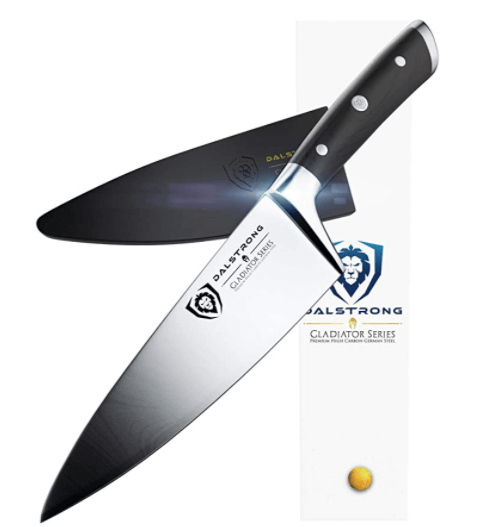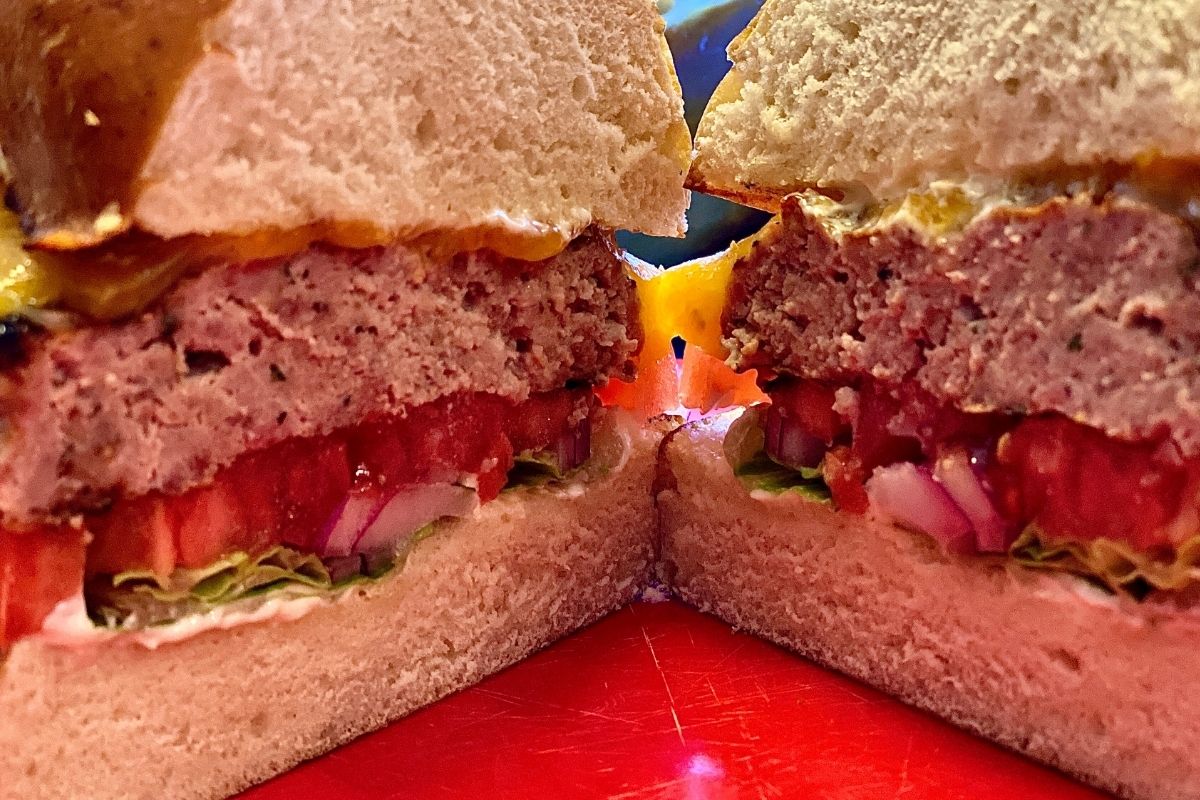One of the most overlooked steps of cooking beef is without a doubt the slice right before it’s served.
Depending on the type of beef you’ve just cooked, how you slice your meat might be just as important as the cook itself.
Tri tip is one such cut where it’s essential to slice it the right way – otherwise you’ll greatly diminish the quality of the meal on your plate.
The good news is, it’s not particularly hard to know how to cut tri tip after you’ve been pointed in the right direction. And we’ve created this quick guide to do just that – read on to learn how to slice your tri tip the right way!
A Primer On Beef Grain
You may have heard a recipe before that mentions cutting beef “against the grain”. But what does that mean exactly? And no, in this context it’s not referring to a grain diet for cattle.
Different beef cuts come from various sections of a steer and consist mostly of fat and muscle. The muscles are made of bundles of cells, called muscle fibers, which are long and string like. The “grain” of a beef cut refers to the direction that these muscle fibers run in the meat.
When you cut against the grain on a piece of beef, you sever the fibers and make all of them shorter – which in turn makes the bites more tender and much easier to chew.
On the other hand, if you were to slice with the grain you’d be left with bites of long, in tact fibers that you have to go to battle with to get down your esophagus.
There are some cuts of beef, typically the most tender types of steak, where you can get away with slicing with the grain without degrading the eating experience. In other words, it’s probably not the end of the world if you don’t slice your filet mignon exactly against the grain.
But when it comes to tougher cuts of beef like tri tip (we’d also include skirt steak, flank steak, flat iron steak, hanger steaks, and brisket on this list), cutting against the grain is an absolute must.
Otherwise, you’ll be left with an impossible to chew meal and put all of that work on the grill or smoker to waste.

How to Cut Tri Tip the Right Way
Tri tip is a unique cut of beef for a few reasons, but one of the main ones is its boomerang shape. The shape of the cut leads to a unique grain situation – there are actually two different grain directions within the same cut, even though it’s not a particularly large cut of beef.
So you can see how this might naturally lead to a situation where an unknowing tri tip slicer just makes cuts all in the same direction, leaving half of the beef cut against the grain and the other half cut with the grain.
The point where the two grain directions intersect is usually at about the halfway point of the cut, although it’s almost never EXACTLY at the halfway point.
When the meat is raw, it’s fairly easy to tell where the two grain directions point. If possible, take note of which direction the “short” side grain goes and which direction the “long” side goes.
It’s not the end of the world if you forget to take note before your cook though – if you look closely after the tri tip comes off of your grill, you should be able to discern the two sections of grain direction.
Tri tip is also generally better and more tender the thinner you make your slices. A nice rule of thumb for tri tip is to cut 1/2 inch slices.
Last but not least, tri tip should be cut “on the bias”, which is another way of saying “with the knife angled slightly”, maybe 30 degrees. Angling the knife increases the surface area of your slices, which results in more tender bites.
Slicing Tri Tip – Step By Step
- After your beef has finished cooking, let it rest for 5-8 minutes before slicing.
- Make an initial slice along the line where the two sections of grain direction intersect. As we mentioned a moment ago, this line will be roughly at the halfway point of the beef but not exactly the halfway point.
- Take one of the two sections and double check the grain direction.
- Then, starting with the smaller end of the meat, angle your knife about 30 degrees and slice against the grain. We like 1/2 inch slices but you can go thinner if you’d like.
- Repeat with the second section of tri tip.
- Serve and enjoy!
That’s really it! The process isn’t particularly complicated once you are aware of the grain concept – and the end results of slicing tri tip the right way is some happy stomachs amongst your guests.
Frequently Asked Questions
Which Knives Are Best for Slicing Tri Tip?
The best slicing knives for beef (and tri tip!) are generally long, thin, and flexible blades. You also do not want to use a serrated edge knife as the teeth have the potential to tear into and shred your tri tip.
With that being said, it’s entirely feasible to slice tri tip with a sharp chef’s knife if that’s all you have on hand.
How Thin Do You Slice Tri Tip?
If you’re cutting your first tri tip, we always recommend starting out with 1/2 inch slices. From there, you can determine your personal preference and adjust to slightly thinner or slightly thicker slices on your next go around.
Wrap Up
Well there you have it – now you’re ready to rock and roll the next time a tri tip comes off of the grill. At the end of the day, slicing tri tip the right way isn’t rocket science at all, but it does take a little bit of know how and attention to the direction of your grain.
If you’re looking for more tri tip knowledge, we’ve got you covered there too. Tri tip occasionally gets confused with brisket (and the two cuts are actually fairly similar in how they are sliced), so we’ve created a resource that goes into the nitty gritty of the differences between tri tip and brisket.
Discover more from Own The Grill
Subscribe to get the latest posts sent to your email.





